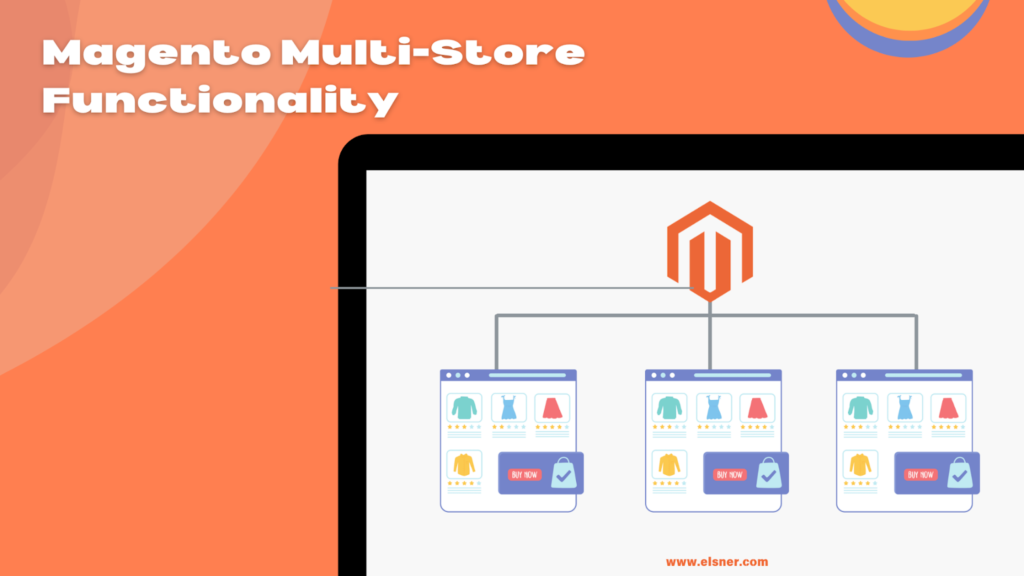Expanding your online business can typically feel similar to navigating an endless maze. You generally necessitate more markets, better customer experiences, as well as streamlined operations in this case. But, now the main question that especially arises in this aspect is that how do you achieve it all? Well, this is where typically Magento’s multi-store functionality comes into play. Did you know that as of 2023, global ecommerce sales are projected to surpass $6 trillion? A significant slice of that revenue comes from businesses that leverage multi-store setups to target specific audiences seamlessly.
Imagine running several online stores, each tailored to a unique customer base, all from one backend system. Sounds ideal, right? Let us guide you through how Magento 2 multi store can be the game-changer your business needs.
Why Choose Magento Multi Store?
Using a Magento multi-store setup has its benefits. Magento development services will be able to assist you in harnessing all the advantages to scale faster and gain ahead of your competition. It will help you scale faster and stay ahead of the competitors.
| Feature | How It Helps | Example |
| Central Management | Control multiple stores from one dashboard. | Update prices across stores instantly. |
| Localization | Customize languages and currencies for different markets. | Add Spanish for a Latin American audience. |
| Cost Efficiency | Manage all stores under one system. | Avoid separate software for every store. |
| Scalability | Add new stores as your business grows. | Launch seasonal stores with ease. |
| Improved SEO | Assign unique domains to rank better on search engines. | Optimize content for region-specific keywords. |
These advantages make Magento perfect for businesses aiming to expand their digital footprint.
Steps to Set Up Magento Multi Store
Setting up a Magento multi store is easier than it seems. Let us break it into simple steps.
1. Decide Your Requirements
First, define the purpose of each store. Do they share inventory or have separate stock? Will you use unique domains? Clarity here will save you time later.
2. Create Root Categories
Navigate to Catalog > Categories in your admin panel. Create a root category for every store. This is essential for separating product catalogs.
3. Add Websites
Go to Stores > Settings > All Stores. Click Create Website and assign a name. Repeat for each store.
4. Configure Store Views
Set up store views to offer multilingual options or regional content. For instance, you can create English and French views for a Canadian audience.
5. Assign Domains
Under the Base URL section, link each store to its domain or subdomain. This ensures your customers reach the right storefront.
6. Test Your Setup
Before launching, test each store thoroughly. Ensure the checkout process, page loading times, and mobile compatibility meet customer expectations.
Managing Magento Multi Store
Running multiple stores requires regular management. With Magento, this becomes less of a hassle.
| Task | How Magento Helps | Tip |
| Inventory Updates | Share inventory across stores or manage separately. | Use automation tools to sync stock levels. |
| Theming | Apply unique designs for each store. | Match designs to your brand identity. |
| Performance Tracking | Use Magento’s analytics to monitor store performance. | Track sales and traffic regularly. |
| Hire a Developer | Work with experts to handle customization and troubleshooting. | Consider hiring a dedicated Magento developer. |
Use Cases for Magento Multi Store
Not sure if a Magento 2 multi store setup is for you? Check out these scenarios.
| Scenario | Implementation | Outcome |
| Global Expansion | Create region-specific stores with local language and currency. | Reach more customers worldwide. |
| Brand Differentiation | Build separate stores for unique product categories. | Strengthen individual brand identities. |
| Seasonal Campaigns | Launch temporary stores for holidays and special events. | Increase seasonal sales without complications. |
| B2B and B2C Stores | Use different stores for wholesale and retail customers. | Tailor pricing and offers for each audience. |
Each use case highlights how a multi store in Magento 2 adapts to different business needs.
Why Hire Magento Developers?
A Magento multi store setup offers great flexibility, but expert guidance can make a difference. Hiring professionals ensures your stores run smoothly.
| Benefit | Why It Matters |
| Custom Features | Developers can add functionality that fits your business goals. |
| Time Savings | Experts speed up the process, letting you focus on strategy. |
| Ongoing Support | From bug fixes to updates, they keep your stores operating at their best. |
If you are serious about magento success, consider hiring a Magento developer. Choose a trusted Magento development company to get the best results.
Example Code for Store Views
Here is a simple code snippet for managing store views:
$store = $this->storeManager->getStore();
echo ‘Store Code: ‘ . $store->getCode();
echo ‘Language: ‘ . $store->getLocale();
This code makes it easy to customize content for different regions.
Conclusion
A Magento 2 multi store setup is not just a tool—it is a strategy. It helps you reach new markets, streamline operations, and deliver exceptional customer experiences.
Whether you are targeting global audiences or running diverse product lines, Magento simplifies the process. And if you hire Magento developer, you can unlock even greater potential.
Do not wait to grow your business. Start with a Magento multi store setup today and see the difference it makes. The Ecommerce world is waiting for you to take the lead.
FAQs
Q: Can I manage multiple stores with one Magento account?
Yes, a Magento multi store setup allows you to manage several stores from a single backend. You can control inventory, pricing, and content for all stores without switching between systems, making operations seamless.
Q: Is Magento 2 multi store suitable for small businesses?
Absolutely. Even small businesses can benefit from targeting specific audiences using multi store in Magento 2. It enables them to manage unique customer groups, test different markets, and scale gradually without heavy investments in infrastructure.
Q: Do I need a Magento developer to set up multi stores?
While it is possible to do it yourself, hiring a dedicated Magento developer ensures a smooth and optimized setup. Developers bring expertise to avoid common pitfalls, configure advanced features, and ensure your stores function flawlessly.
Q: Can I localize my stores for different countries?
Yes, Magento lets you customize language, currency, and content for region-specific audiences. With Magento 2 multi store, you can create tailored shopping experiences that resonate with local customers, improving engagement and sales.
Q: How do I find a Magento development company for support?
Look for experienced providers offering Magento 2 development services and strong customer reviews. Focus on companies with a proven track record in multi-store setups, as they can guide you through both initial implementation and long-term success strategies.







